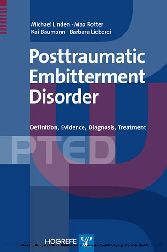Suchen und Finden
Service
Posttraumatic Embitterment Disorder
Michael Linden et al.
Verlag Hogrefe Publishing, 2007
ISBN 9781616763442 , 172 Seiten
Format PDF, OL
Kopierschutz Wasserzeichen
Geräte
Pathological reactions to adverse life events are frequent and it has become increasingly clear that current clinical descriptions and diagnostic classifications, which subsume all such reactions under terms such as “PTSD” or “reactive and adjustment disorders,” are inadequate. One widely seen type of pathological reaction can be classified as “Posttraumatic Embitterment Disorder (PTED).” It is seen mort frequently in times of societal changes which force people to cope with reorganizations of their lives and prospects. This book provides the first comprehensive description of PTED, including theoretical background, etiology, and treatment suggestions based on new concepts from wisdom psychology. A highly practical appendix includes diagnostic checklists and tools for treatment planning with PTED patients, suitable for use by both researchers and clinicians. This ground-breaking book is of interest to researchers and clinicians working in the field of posttraumatic and adjustment disorders, as well as to forensic psychologists and psychiatrists who may have to give expert opinions in cases involving trauma.
Service
Shop



















